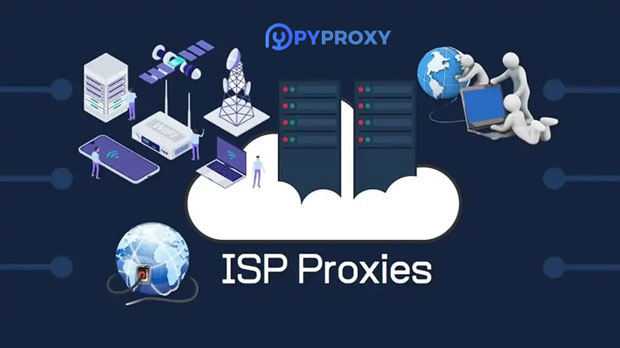Bulk proxies are an essential tool for individuals and businesses involved in various online activities that require a high level of anonymity, security, and efficiency. These proxies provide a means to manage multiple internet connections without exposing one's identity or location, which is particularly beneficial in activities such as web scraping, SEO management, and market research. Bulk proxies, essentially large pools of IP addresses, allow users to distribute their requests across different servers, making it harder for websites to detect and block the activities. This article delves deeper into the various network activities that commonly utilize bulk proxies and explores their value and impact. 1. Web Scraping and Data HarvestingOne of the most prominent uses of bulk proxies is web scraping and data harvesting. Web scraping involves collecting large volumes of data from websites for various purposes, such as market research, competitive analysis, or academic studies. Websites often implement measures to prevent scraping, such as blocking IP addresses that send too many requests in a short time. Using bulk proxies allows scrapers to rotate IPs, thus avoiding detection and preventing the website from blocking their access.For businesses, scraping is an invaluable tool for gathering competitor pricing, product availability, and customer sentiment. With bulk proxies, it is possible to scrape data from multiple sources simultaneously without risking IP bans or throttling. This increases the efficiency of data gathering processes and ensures that users can access valuable information from a variety of online sources, which would otherwise be restricted or limited.2. SEO Management and Rank TrackingSearch engine optimization (SEO) professionals and digital marketers often rely on bulk proxies for managing and monitoring their website rankings on search engines. Bulk proxies are used to track keyword rankings across different locations, devices, and search engines without triggering penalties or being flagged as suspicious by search engines. These proxies allow users to simulate searches from various geographical regions, providing more accurate insights into how their websites are performing globally.Additionally, bulk proxies help SEO professionals gather competitor data, track backlinks, and monitor website traffic from different IP addresses. By masking the user’s identity and location, proxies ensure that searches appear organic and undetectable, helping to protect the SEO strategy from potential manipulation by competitors or search engines.3. Ad Verification and Campaign ManagementAnother critical application of bulk proxies is in ad verification and campaign management. Advertisers and media buyers use proxies to verify the placement and visibility of their ads across different websites and networks. By utilizing bulk proxies, they can simulate ad impressions from various locations and devices, ensuring that their ads are being shown as intended and are not subject to fraudulent activities.In the world of online advertising, fraud is a significant concern, with some websites serving fake impressions or generating fake clicks to drive up advertising costs. Bulk proxies allow advertisers to bypass these risks by ensuring that their campaigns are displayed properly to real users and not subjected to fraudulent practices. Proxies also help advertisers track the performance of their campaigns in multiple regions and demographics, giving them a broader and more accurate understanding of how their ads are performing.4. Social Media Management and AutomationSocial media platforms have become a critical space for both businesses and individuals to engage with their audience. However, managing multiple accounts or automating certain tasks, such as liking posts, following accounts, or posting content, can result in the platform flagging or banning accounts for suspicious activity. Bulk proxies provide a solution by allowing users to rotate IP addresses while performing these actions, thus masking their true identity and making their activities appear more natural.For social media managers handling multiple accounts, bulk proxies are invaluable in preventing account suspensions due to actions that are perceived as spammy or automated. With the help of bulk proxies, social media managers can automate tasks, test ads, or manage their accounts without facing issues related to geographic restrictions or account bans.5. Ticket Purchasing and Online ShoppingBulk proxies are frequently used for ticket purchasing and online shopping, especially when demand for a particular event or product is exceptionally high. Whether it’s purchasing concert tickets or limited-edition items, these activities are highly competitive, and many users turn to proxies to increase their chances of success.By rotating IP addresses, bulk proxies make it possible for users to bypass purchase restrictions, such as limiting the number of tickets or items a single IP address can purchase. This is particularly useful for individuals looking to secure tickets for high-demand events or to snatch up rare products that sell out quickly. However, it’s essential to use proxies ethically, as bypassing limitations can lead to unfair advantages and negative consequences for other consumers.6. Enhanced Security and PrivacyIn today’s digital world, privacy and security are paramount. Bulk proxies help enhance security by masking the user’s real IP address, making it significantly harder for malicious entities to trace or attack them. These proxies are commonly used by individuals who prioritize anonymity when browsing the web or accessing restricted content. By using bulk proxies, users can prevent hackers from tracking their activities or identifying their location. This is particularly important for people engaging in sensitive activities such as financial transactions, private browsing, or accessing geo-blocked content. With the increasing concern over online privacy, bulk proxies provide a vital layer of protection, ensuring that personal information remains secure.7. Market Research and Competitive AnalysisMarket research and competitive analysis are critical components of business strategy. Bulk proxies are used to conduct anonymous research across multiple websites, forums, and marketplaces, allowing businesses to gather insights about customer behavior, market trends, and competitor activities. Proxies enable companies to monitor competitor prices, inventory levels, and customer feedback without revealing their identity or location.The ability to gather this information without being detected is crucial in formulating competitive strategies and making informed decisions. Bulk proxies allow businesses to simulate consumer behavior from different locations and demographics, ensuring that they can analyze global trends and adapt to shifting market conditions effectively.Conclusion: The Value of Bulk Proxies in Digital ActivitiesIn conclusion, bulk proxies serve a variety of crucial functions in digital activities ranging from web scraping and SEO management to social media automation and online security. Their ability to provide anonymity, bypass restrictions, and enhance operational efficiency makes them indispensable for individuals and businesses engaged in online activities. By enabling users to maintain privacy, avoid bans, and streamline tasks, bulk proxies provide significant value, ensuring that digital operations are conducted smoothly and securely. Whether for research, security, or advertising, bulk proxies are a vital tool in the modern digital landscape.
May 16, 2025



































































